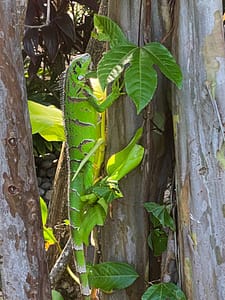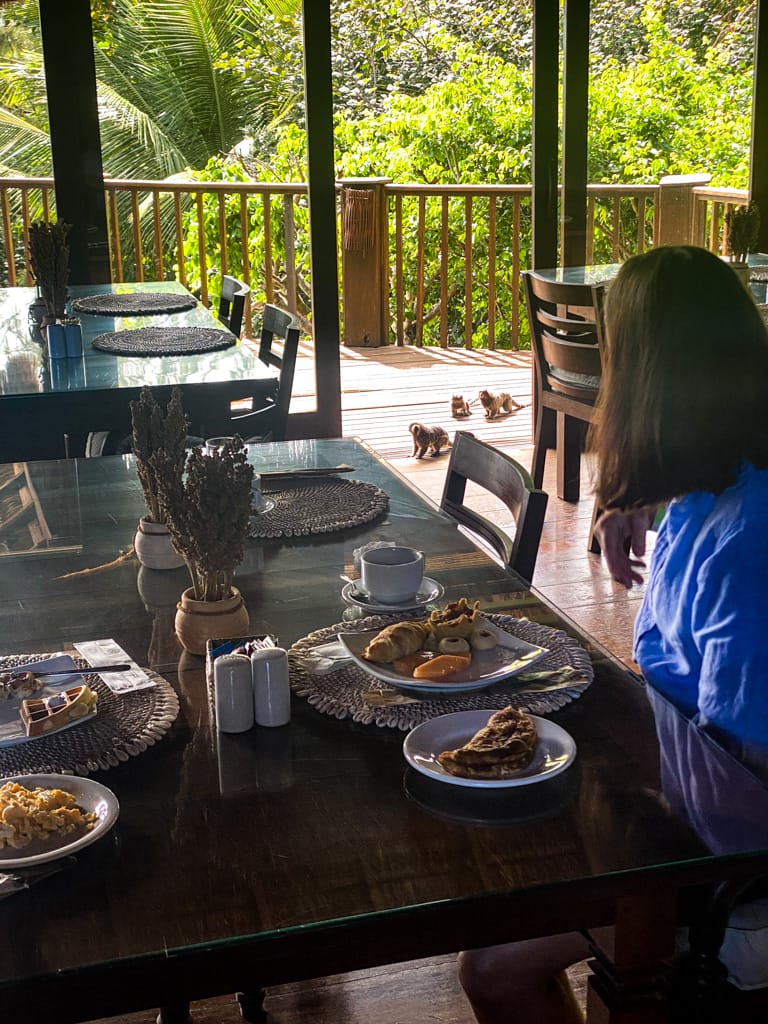Brazil
Brazil Family Travel Guide
Welcome to the Brazil Family Travel Guide, where we embark on a vibrant journey through a land of samba rhythms, lush rainforests, and golden beaches. Brazil, a country bursting with color and life, offers families a unique blend of cultural richness, natural wonders, and lively urban landscapes.
From the iconic Christ the Redeemer in Rio de Janeiro to the adventurous Amazon rainforest, this guide is your key to exploring Brazil’s diverse attractions. Perfect for families seeking excitement and discovery, Brazil promises an unforgettable adventure for all ages. Join us as we dive into the heart of Brazil, a destination where every day is a celebration of life and joy. 🇧🇷✨🌴










Must-Visit Destinations in Brazil
Iguazu Falls: Nature’s Spectacular Show
- Majestic Waterfalls: View the falls from both Brazilian and Argentine sides for a complete experience.
- Wildlife Encounters: Spot tropical birds and possibly even capuchin monkeys in the surrounding rainforest.
- Adventure Activities: Take a boat tour to the base of the falls, or explore the nearby trails.
Amazon Rainforest: The Lungs of Our Planet
- Jungle Treks: Guided tours through this vast rainforest offer a once-in-a-lifetime experience.
- River Exploration: Cruise along the Amazon River, spotting pink dolphins and unique bird species.
- Eco-lodges: Stay in jungle lodges for an immersive rainforest experience.
Rio de Janeiro: The City of Samba
- Iconic Landmarks: Visit the Christ the Redeemer statue and Sugarloaf Mountain.
- Beach Days: Spend time on Copacabana or Ipanema, enjoying the lively beach atmosphere.
- Cultural Exploration: Explore the colorful streets of Santa Teresa and the historic downtown.
Pipa Beach: A Tropical Paradise
- Dolphin Watching: Spot dolphins playing in the bay, a magical experience for kids.
- Relaxed Vibes: Enjoy the laid-back atmosphere, with beautiful beaches and natural pools.
- Surf and Sun: Try out surfing lessons or simply relax on the sandy beaches.
Sao Paulo: A Melting Pot of Cultures
- Museums and Art: Visit the Sao Paulo Museum of Art and the interactive Catavento Cultural.
- Urban Parks: Ibirapuera Park offers a green escape with activities for the whole family.
- Gastronomy: Experience the diverse culinary scene, from street food to family-friendly restaurants.
Tips for Traveling with Kids in Brazil
- Family-Friendly Accommodation: Opt for resorts or hotels with kid-centric activities and amenities.
- Transportation: Plan ahead for internal flights or use comfortable, child-friendly transport in cities.
- Food Adventures: Introduce your kids to Brazilian flavors, from tropical fruits to pão de queijo (cheese bread).
- Safety First: Stay aware in crowded or tourist-heavy areas and prioritize health precautions in remote areas.
Engaging Activities for Kids
- Portuguese Fun: Teach your kids some Portuguese phrases for an engaging cultural experience.
- Nature and Wildlife: Educational visits to eco-parks and reserves offer insights into Brazil’s diverse ecosystems.
- Cultural Immersion: Participate in local music and dance workshops, especially in culturally rich areas like Salvador.
Essential Packing List
- Tropical Essentials: Lightweight clothing, sun protection, and mosquito repellent are key.
- Comfortable Footwear: Prepare for city walks and nature trails.
- Beach Gear: Remember swimwear and beach toys for Brazil’s stunning coastline.
Food in Brazil

Coffee Culture
In Brazil, coffee is not just a drink; it’s a national passion deeply ingrained in the fabric of everyday life. My first encounter with Brazilian coffee culture was a revelation. Especially as someone used to the convenience of a drip coffee maker back home. Here, espresso reigns supreme, and it was this shift that broadened my coffee horizons significantly. In Brazil, the act of enjoying a coffee, or “cafezinho,” is a ritualistic pause in the day. Thus, an opportunity for social interaction, reflection, or a quick energizer. Cafés are ubiquitous, ranging from corner bakeries serving sweet and potent little cups. Also sophisticated coffee houses that celebrate the country’s rich coffee-growing heritage.
The coffee here is typically strong, rich, and consumed in small quantities. This is a stark contrast to the large, diluted drip coffees I was accustomed to. This transition to espresso was an eye-opening experience, deepening my appreciation for the complexity and variety of coffee. It’s not just about the caffeine kick; it’s about savoring a moment of pleasure in a cup. A philosophy that Brazilians embrace wholeheartedly. I am still partial to my drip coffee maker, but my brisk transition to expresso has expanded my horizons extensively when it comes to my favorite drink.
Brazilian Cuisine
In addition to exploring Brazil’s diverse beauty, its food cannot be overlooked. Our Brazil Family Travel Guide is here to ensure you make the most of your visit. Brazilian cuisine is a vibrant tapestry woven from the diverse culinary traditions of its indigenous peoples. Portuguese colonizers, African slaves, and various immigrant communities formed the cultural diversity that remains. This fusion has resulted in a rich and varied gastronomy. Thus offering a delightful array of flavors that is both hearty and celebratory. The national dish, feijoada, is a flavorful stew of black beans and pork. It is traditionally enjoyed on weekends with family and friends, symbolizing the communal nature of Brazilian dining. Street food plays a vital role in Brazil’s food culture, with popular snacks like pastéis (fried pastries filled with savory ingredients) and coxinha (chicken croquettes) offering a quick, delicious bite.
Seafood
In the coastal regions, seafood dishes such as moqueca, a fragrant fish stew infused with coconut milk and palm oil, reflect Brazil’s rich coastline, while the churrasco, or Brazilian barbecue, showcases the country’s love for grilled meats. This method of barbecuing, where various cuts of meat are skewered and slow-cooked over open flames, is not just a cooking technique but a social event, bringing people together in a celebration of food and life. The cuisine is also characterized by its use of tropical fruits like açaí, cupuaçu, and guava, which find their way into juices, desserts, and even savory dishes, adding a unique and refreshing twist.
Local Traditions
Each region of Brazil adds its own local ingredients and traditions to the mix, from the hearty bean and pork dishes of the northeast to the rich Italian and German influences in the southern states. But what really stood out for me in Pipa Beach were the gelato shops. After a day soaking in the sun and sand, there’s nothing quite like indulging in a scoop (or two) of rich, creamy gelato. Each flavor seemed to capture a bit of Brazil – from tropical fruits like mango and passion fruit to decadent chocolate, it was like tasting the essence of the country in a cup. No surprise here, but my favorite was the coffee flavor. Brazil is a sensory journey, offering a taste of the country’s diverse landscape, culture, and history, and it’s this variety that makes Brazilian cuisine a true adventure for the palate.















Culture in Brazil
Brazil’s culture is a vivid tapestry, richly woven with elements that reflect its diverse history and people. This vibrant nation celebrates life with a fervor seen in its colorful festivals, pulsating music, and diverse artistic expressions. The rhythm of Brazil is most famously encapsulated in the energetic beats of samba, a musical genre that originated in Rio de Janeiro and has become synonymous with the Brazilian carnival, a spectacular explosion of color, dance, and joy. Follow our Brazil Family Travel Guide to learn more.
Capoeira
The influence of African culture is profoundly felt, especially in practices like capoeira, a mesmerizing blend of martial arts, dance, and music. It’s an art form that speaks volumes about Brazil’s history, originally developed by African slaves as a form of resistance and self-expression, and now celebrated as a symbol of cultural pride. Witnessing capoeira in the town square of Pipa Beach, with its fluid, dance-like movements and powerful acrobatics, was a captivating experience. It highlighted the resilience and creativity of the Brazilian spirit. Learn more about Capoeira and explore Brazil’s diverse beauty and culture.
Indigenous Heritage
Brazil’s indigenous heritage also plays a crucial role in its cultural identity. Traditional crafts, rituals, and stories from native communities offer a glimpse into the country’s ancient past and its deep connection with nature. Meanwhile, the legacy of Portuguese colonization is evident in Brazil’s language, architecture, and certain aspects of its cuisine, creating a unique blend of European and South American influences.
Brazillian Street Art
Art is a vital expression of Brazilian culture, with street art particularly prominent in cities like São Paulo and Rio de Janeiro. These vivid murals and graffiti pieces often carry social and political messages, making the streets a canvas for public dialogue. Explore Brazilian street art.
The Brazilian way of life, or ‘jeitinho brasileiro,’ embodies adaptability, ingenuity, and a joyous approach to life’s challenges. It’s about making the best of every situation and finding happiness in everyday moments. Whether it’s enjoying a simple cafézinho (small coffee) or engaging in passionate discussions about football, a national obsession.
At the heart of Brazilian culture is a sense of communal warmth and inclusivity. A trait that makes this country not just a place to visit, but a place to experience and feel a part of. The Brazilian ethos is about embracing life with open arms, making it a culture that is as inviting as it is fascinating. Discover more about Brazilian culture. More reasons to explore Brazil’s diverse beauty.
Brazil, a Burst of Adventure and Culture
Brazil, the largest country in South America, is a land of diverse landscapes and vibrant cultural tapestries. It’s renowned for its sprawling Amazon rainforest, home to a vast array of wildlife and indigenous groups. The country boasts iconic landmarks like the Christ the Redeemer statue in Rio de Janeiro, and the pulsating energy of its annual Carnival festival, famous for its samba dancers, elaborate costumes, and lively music.
Brazil’s coastline stretches over 7,500 kilometers, offering stunning beaches like Copacabana and Ipanema in Rio, and the tranquil paradise of Pipa Beach in the northeast. The country’s cuisine is as diverse as its geography, with dishes like feijoada and churrasco being national staples.
In terms of economy, Brazil is a regional power with significant agricultural, mining, and energy sectors. It’s a melting pot of cultures, with influences from Portuguese colonizers, African slaves, and indigenous people, making its cultural landscape as varied as its natural one. Brazil, with its colorful cities, lush rainforests, and rhythmic music, presents a unique and captivating experience to all who visit.
Brazil is a land where every day is a celebration of life, color, and culture. It’s a place where your family can dance to the rhythm of samba, marvel at natural wonders, and make memories on sun-kissed beaches. It’s not just a trip; it’s an opportunity to expand your horizons and experience the joy of discovery together. With its blend of cultural richness, natural beauty, and child-friendly attractions, Brazil offers an unforgettable adventure for families. So, pack your bags and join us ‘On the Road with Red‘ and our Brazil Family Travel Guide for an exhilarating Brazilian journey! Come explore Brazil’s diverse beauty.



